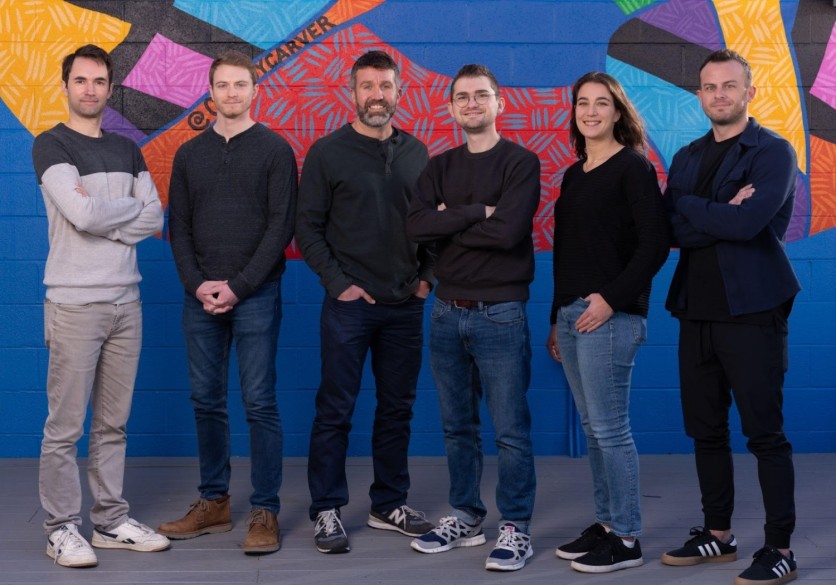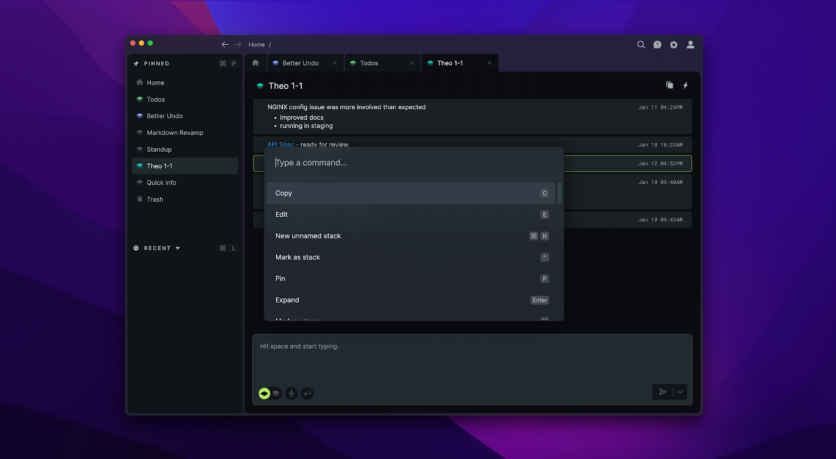
One of the biggest challenges every new developer must overcome at the start is learning to find their focus while juggling several different threads of work.. Coding syntax, project deadlines, code reviews, helping out other developers, and debugging issues are only some of the elements every developer needs to juggle in order to be effective. When developers are juggling multiple threads, it's hard to capture them in a simple and organized way.
Professional software developers rely on applications that are not designed for their needs. Often, developers will try to set up an organized system using a note-taking application like Notion. But they'll find that this system becomes impractical to maintain overtime. So they return to a barebones app like Notepad++, Google Keep, or Apple Notes. This is practical, but leaves their work in disarray. Stashpad is looking to change this by offering a note-taking solution specifically designed with developers and their managers in mind. "When you have a million tabs open and sticky notes everywhere, it's a mess. This is a tax on your mental clarity and a tax on your productivity," says Stashpad CEO, Cara Borenstein, "It could be so much better.".
Self-described as "a new way to take notes", Stashpad (formerly known as Bytebase) is a note-taking platform focused on improving efficiency and workflow by focusing on the individual. By providing developers with a scratchpad that allows them to easily store and organize their thoughts, Stashpad aims to bring order to the chaos that surrounds developer work.
"At Stashpad, we 'embrace messiness'. Creating software is a messy process - there are a lot of moving parts and it's important to have clarity at each step of the way," says Borenstein, "With Stashpad, you can capture ideas quickly and organize them later, as you see fit."
To achieve this, Stashpad has all of the features that developers expect - markdown, customizable keybindings, vim mode, code syntax highlighting, performance, options for local usage. It's also specifically designed to help with context-switching, which is a necessary part of professional software developer work. With Stashpad, you can easily compartmentalize notes as you write them, so you can stay organized on multiple threads of work. Stashpad does this with a unique user experience that makes note-taking reminiscent of what DMing yourself would be like, crossed with your code editor. This makes the note-taking process more dynamic, personal, and effective in the long term by facilitating navigation and personalization.
Anyone who has ever used an email client will immediately feel familiar with Stashpad's way of organizing notes as it replaces folders and labels for "stacks". These stacks can be pinned/unpinned, have colors assigned to them, copied/deep copied, exported, moved, and much more. In addition to holding notes and sub-notes, these stacks also facilitate how the user reorganizes information as their needs change over time.

Typing notes is as easy as it gets. Pressing the space key will immediately bring focus to the textbox at the bottom of the screen, where the user will be able to start typing their notes and make use of personalization features. By just clicking one of the four buttons, the user can choose to create a note or a stack, use split lines as a means to create different notes, toggle how the enter key operates, and quickly change which stack will the note be added to.
All of the features available with Stashpad can be accessed by using shortcuts, something that is strongly recommended by the team for frequently performed actions. While the use of shortcuts can be intimidating on most platforms, Stashpad has taken steps to make it as easy as possible. By clicking ctrl/cmd, users will immediately see the keys that will activate each of the buttons they see on the screen, making it faster to continue the process through their keyboards instead of by clicking.
A "command menu" is also available to further enhance what users can achieve through shortcuts. This mode will open a searchable list of commands that the user can quickly search or scroll through, bringing even more convenience to the user. All of the shortcut features are presented to the user upon opening the application for the first time and taught through an extremely short tutorial that will have them using shortcuts in less than a minute.
"We are developers. We set out to create tools to help developers like us work better and enjoy the process," says Borenstein, "When we dug in and looked at where devs work, we saw that the apps they have open the most are their code editor, browser, slack, jira, and their notepad. There's been a ton of investment in each of the other parts of their stack, but the notepad is overlooked. Not anymore."
In addition to its powerful keyboard navigation, Stashpad also includes customization features like Markdown syntax, color assigning, to-dos, code blocks, custom shortcuts, and themes. The application also features a "sticky mode" designed to make it easier for single-monitor/laptop users or those in a video call to take notes without having to frequently change focus to a new window.
Stashpad is available on Windows, MacOS, Linux, and iOS (with Android coming soon). Since its launch in August of last year, it has already been downloaded by more than 5K users and has seen its popularity increase. Investors have also been quick to see the potential in Stashpad, with a pre-seed funding round raising $1.8 million back in August.
With recent layoffs in the tech industry, companies increasingly need to do more with less. Stashpad's focus on improving the note-taking experience for developers and software development teams could not have come at a better time as efficiency is about to become the law of the land.
ⓒ 2025 TECHTIMES.com All rights reserved. Do not reproduce without permission.




